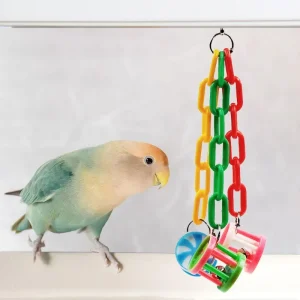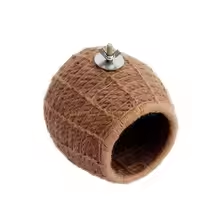Size: 7 to 6.3 inches (around 12 to 16 centimeters)
Weight: 18 to 32 grams
Wing Span: 7 to 10.2 inches (22 to 26 centimeters)
Lifespan: 5 to 9 years
Physique: small body with rose-red feathers and brown streaks all over the body, sharp pointed seed cracking beaks
Best Suited for: Moist and cool green forests, tree lined suburbs
Temperament: Interactive, loud, active, joyful, aggressive
Comparable Breeds: Red Finch Bird, Yellow Finch
Amongst many other sub-breeds of finches, the Purple Finch is one of the most popular ones. The interesting personality and beautiful looks of the Purple Finch make it a world famous bird. In this article, we talk about this little fellow in detail.
The scientific name of purple finches is Carpodacus Purpureus. The personality traits of the Purple finch were first highlighted by a researcher named Johann Friedrich in 1789 and his descriptions differentiated this little fellow from all other finches. It is a part of the bird family that originates from the Northern hemisphere and African regions.
The purple finches are very small birds that have a distinctive appearance. The males and females are both much alike with only a few differences in their looks.
All adult finches have brown feather covered body with a wing-cut tail. The males have an upper body part that is covered with raspberry feathers. The female finches do not have the red streaks and have a light brown colored upper body instead.
Since these parrots are so small, health can be a serious concern for the purple finch. The one thing that can make their health deteriorate very rapidly is poor nutrition.There are no major health diseases that are reported for these birds to have. However, a good diet of their preference needs to assured.
Must Read Our Article:: Yellow Finch
Even on a very good diet, the Purple finch is not blessed with a very long life. Unlike other parrots, it does not live a long life. The maximum age reported is 5 to 9 years.
Purple Finches like to eat seeds the most. In fact, these birds have beaks that are designed to cut seeds of any size but all purple finches are very particular about the seeds the feed on. They specifically choose thin over thick seeds according to their personal preferences.
Purple Finches are not the type of birds that will be content by eating fruits or any other vegetables. They need seeds to eat as they get maximum nourishment from it.
These little parrots are great pets! They bring life into your home. Interactive and very loud, the purple finches get along very well with fellow humans. They keep children entertained by singing and communicating with them. Children however should not be allowed to be alone in the company of purple finches. These parrots are aggressive and can cause physical harm to kids.
Purple finches are prone to living in open habitats and can survive well with other mates. However, these birds most live in small flock of birds they closely bond with. These birds are good natured and jolly birds that get along with mostly every other fellows bird in the group. However, they can easily be offended as well and get angry.
Since the purple finches are great pets, it becomes very important to train them well in certain aspects. These birds are natural talkers. Therefore, the only thing that you will need to train them for is to learn new words.
This can be done by repeating words in front of them. Aggression is a very obvious trait of purple finches. It is crucial that they are taught how to control their anger and restrict aggressive behavior.
Read Our Article:: Finch Birds
These birds are very loud and natural talkers. They have natural talking skills and do not need to be trained much to speak. As a pet, the purple finches will be very loud and interactive in your home. It will greet everyone and is likely to communicate with everyone as well because of its happy nature.
Aggression is a dominant trait of the purple finch’s personality. These little parrots can get offended on little things. They react very aggressively to the tiniest things. Biting is a way through which they express their dislike and discomfort. Hence, these birds need to be taught not to bite or else they may harm others.




Join our parrot-loving community and never miss updates, new arrivals, or expert care tips. We’re here to bring you the best for your feathered friends—every step of the way.
Copyright © 2025 CuteParrots.